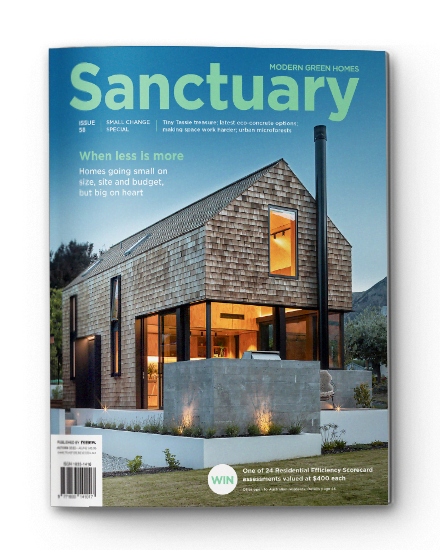Eco-concrete case studies
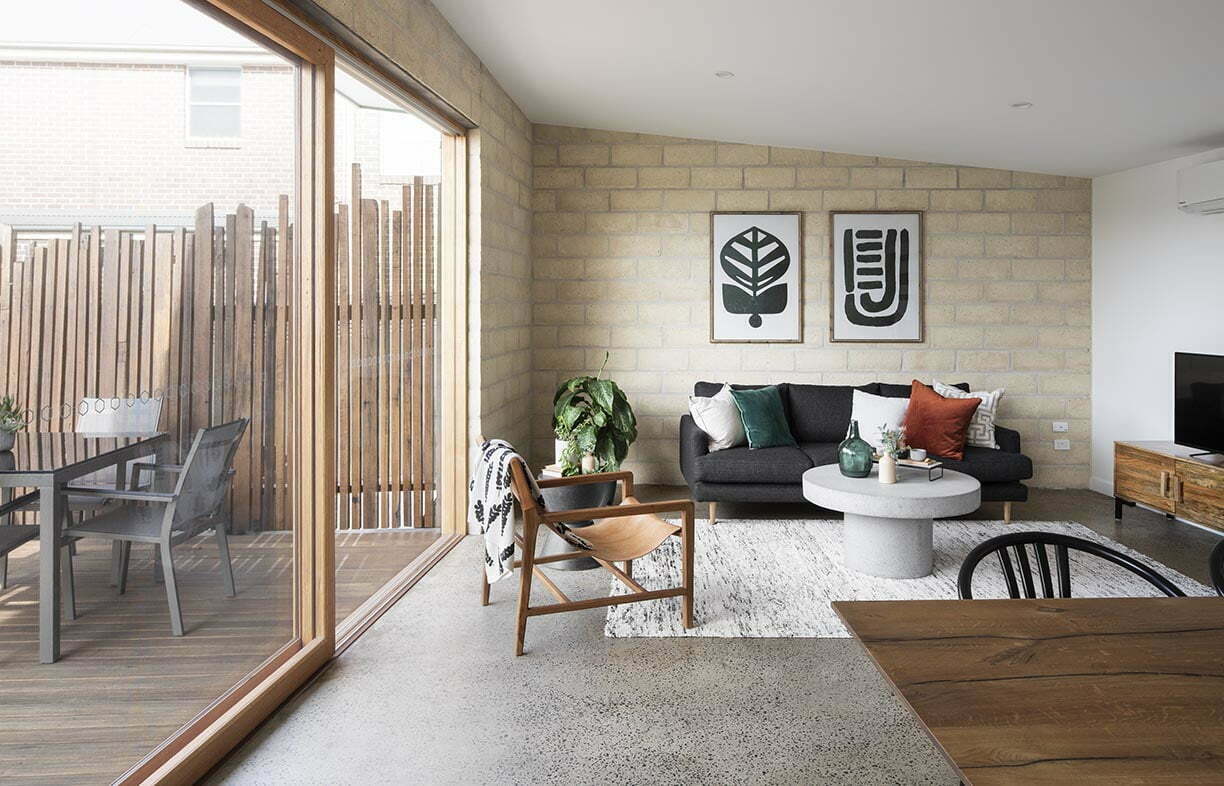
Adored for its thermal mass benefits and durability, concrete remains one of the most popular building materials in the world, but its shockingly high embodied carbon footprint cannot be ignored. Luckily, there are now a number of greener alternatives available. Jacinta Cleary examines how they have performed in three different homes.
For more information on the latest in environmentally friendly concrete mixes, read Dick Clarke’s article featured elsewhere in Sanctuary 58.
Geopolymer concrete slab for a flood-resilient renovation
The downstairs fitout to Daniel and Marion’s house in a flood-prone area of Brisbane was designed not to keep floodwater out, but to let it in and then out again without damage, through the use of materials that can be hosed down and left to dry. This includes a polished concrete slab made from Earth Friendly Concrete (EFC), a geopolymer product from Wagners. It suited the project because of its extra strength and durability – particularly handy in the event of future floods.
As a geologist, Daniel has been following the development of geopolymer concrete for a long time. “If you care about greenhouse gas emissions, then geopolymer is the way to go,” he says, explaining that it’s a quite different type of concrete due to the products used to replace the typical cement-based binding process. EFC is made from a geopolymer binder that combines two recycled industrial wastes – fly ash from coal-fired electricity production and iron ore slag – mixed with aggregate to make a slab. “By replacing Portland cement entirely, the emissions reduction is around 80 to 90 per cent.”
Marion and Daniel were committed to “pushing the boundaries” with their project, which saw the first use of EFC for a residential polished concrete slab in the country. The slab was designed according to the specifications for standard Portland cement concrete, with a large amount of steel reinforcement, although Daniel questions whether that much steel is necessary with a product such as EFC due to its higher tensile strength and fewer fractures. “It will take time for engineers unfamiliar with the properties of geopolymer concrete to become comfortable enough to adapt their designs,” he says. The builder and concreters noted that the product was different to work with compared to standard concretes, with more effort required to achieve an even surface.
Daniel explains that the colour changes that accompany geopolymer during curing were unfamiliar to the polishers. Heavy polishing of the slab exposes the yet-to-be-oxidised fresh concrete, which is greenish in colour. This resolves to a more standard grey after oxidisation, around a week later. While this was initially confusing, it wasn’t a significant problem. The slab has a matt finish (no oil used) in keeping with the simple finishes throughout the lower level of the house.
Daniel has barely noticed any hairline cracks in the slab and is very happy with the colour and the result. As part of his work with the Sustainable Minerals Institute at the University of Queensland, he is now working with Wagners to explore more sustainable aggregate options in order to achieve a near 100 per cent recycled concrete product, using recycled ‘ore-sand’ from mineral ores.
For the full story of Daniel and Marion’s project, designed by JDA Co., see Sanctuary 56.
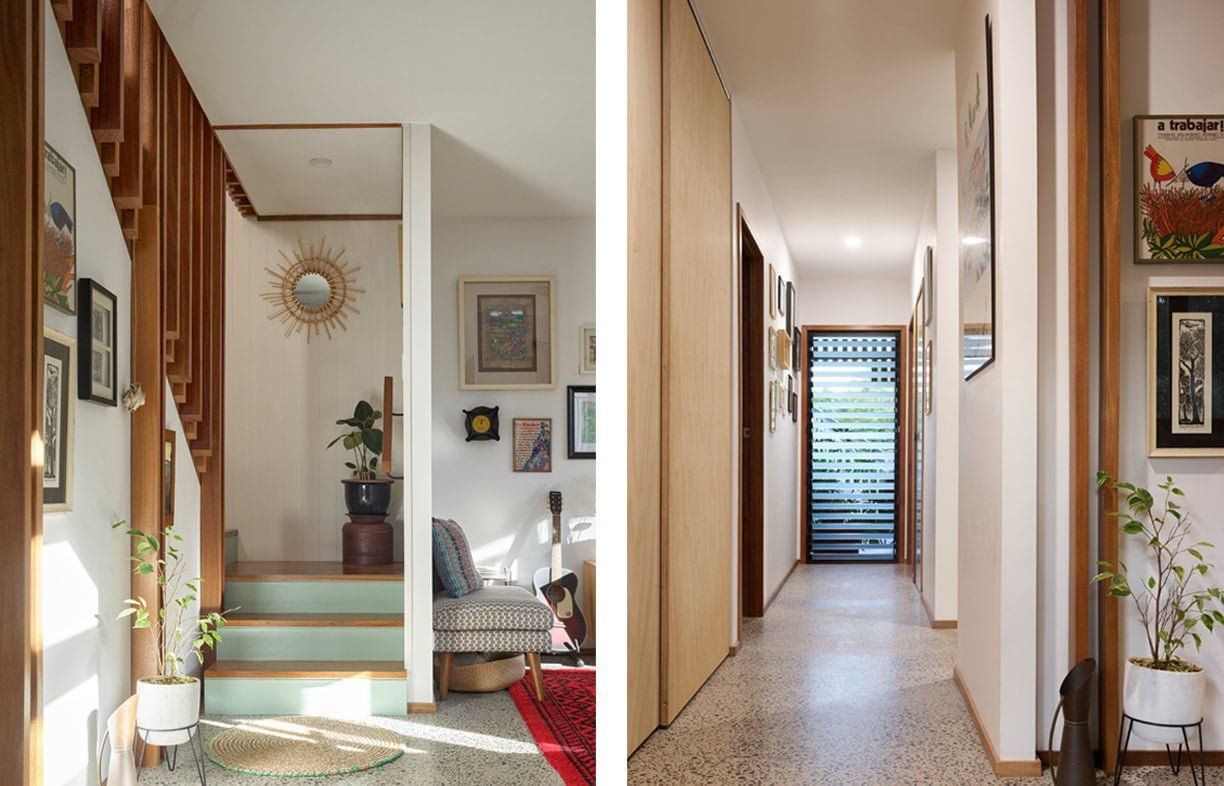
An extension with an E-Crete concrete slab floor
When Michael and Amanda’s home extension in Brunswick, Victoria, featured in Sanctuary 38 back in 2017, ACM E-Crete was an emerging geopolymer concrete product used more typically for bollards; their project was its first use as a residential polished slab. Keen to reduce the environmental impact of having a concrete slab in their home, and in particular the use of energy-intensive cement, Amanda and Michael selected E-Crete because it used industrial waste products fly ash and slag to replace the cement component, greatly reducing the carbon emissions associated with making the product.
Michael describes the challenges identified by the builder and the polisher at the time, who said the concrete was “soft like butter”, making it hard to get the finish they were used to delivering. “Our builder was supportive, but just hadn’t used the product before,” he says. While the finished slab has a “slightly pockmarked” look, this does not bother the couple. “Luckily, we didn’t want a hyper-smooth finish and just wanted to use natural oil on the polished surface, so this was fine by us.”
E-Crete was also used for the garage slab, which is unpolished. In this case the slab dried unevenly as it was against another garage on the western boundary and didn’t get much direct sun – something that would have posed a problem with any type of concrete. “This took time and management, but in the end was okay,” says Michael.
He reports that the slab is generally holding up well. “It has got some micro hairline cracking, though, which started in the middle of the slab along a line where our greywater system runs. These cracks have widened a bit in the last year and are likely to need some work in coming years.” Michael also describes some weakening and corrosion of the slab around the sill of their large and heavy timber-framed external doors, that will also need some work.
While Michael recommends E-Crete a few years on from their home extension, he says that it’s likely that there have been developments in the technology, the mixes and the source materials since. “I would definitely recommend doing your research and going for a concrete that reduces the use of cement,” he says.
Read the full story of Amanda and Michael’s renovation and extension, by Baker Drofenik Architects, here.
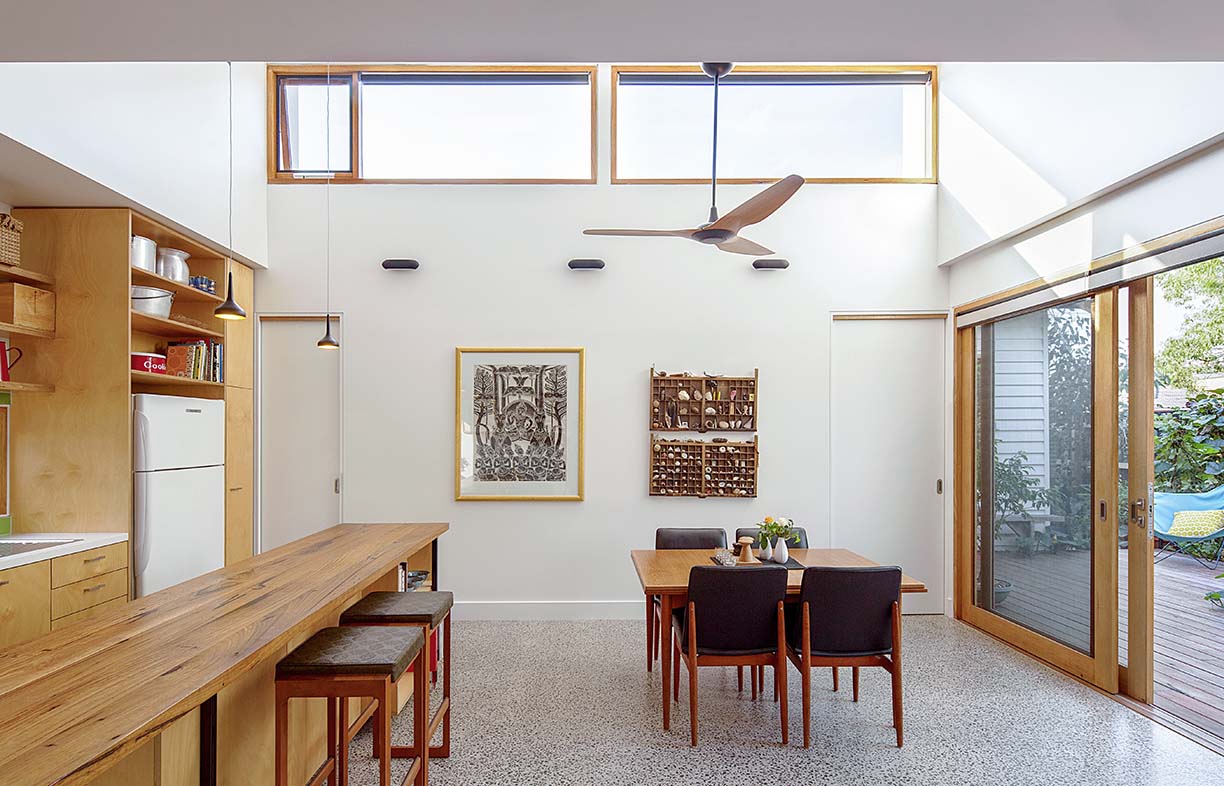
Green Star concrete fits the bill for a small eco-development
Concrete floors with their thermal mass benefits were a key design element of the three sustainable homes Howard and Libby Elston built on their large block in Melbourne’s Ringwood East, featured in Sanctuary 57. While they used the one product for all three slabs – Green Star concrete from Vic Mix – the third slab ended up with a rougher finish than the other two, with polishing failing to produce a smooth surface. They speculate that the wetter conditions on the day the last slab was poured had an impact. “We don’t know why this happened, but it might have something to do with rainy weather during the pour and slab curing,” says Howard.
To produce a smooth surface on the third slab they used a levelling liquid over the entire surface and then polished back to a smooth surface, which fixed nearly all the pockmarks but left them with a different finish to the other two slabs. “If anyone looks closely they can see where the levelling liquid has completely covered the aggregate, leaving a whiter patch on the floor,” says Howard. “However, we only know to look because we are familiar with the history. The overall finish is fine, just different.”
Howard and Libby are pleased with the finished look, especially of the first two slabs, which include a mix of aggregate sizes and types such as granite and bluestone. “It’s a beautiful result, with random aggregate sizes and types scattered across the surface,” says Howard. The slabs are finished in Livos natural oil.
Howard says some hairline cracks appeared in the first slab while they were living in that house, but they weren’t a concern. “David, our builder, warned us that hairline cracks are a distinct possibility with any slab. Interestingly, the third slab doesn’t have these cracks. Was that something to do with a different slab pour? Was it because the finishing involved a levelling material? I can’t say.”
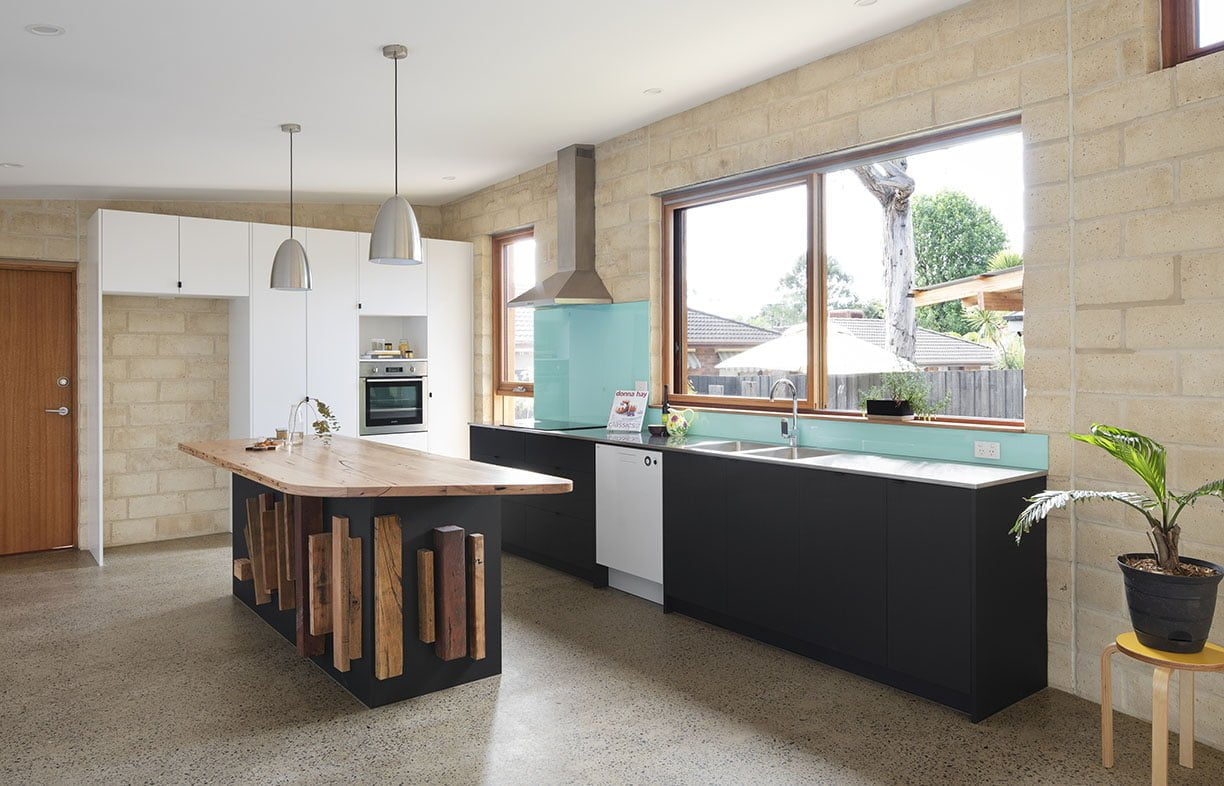
further reading
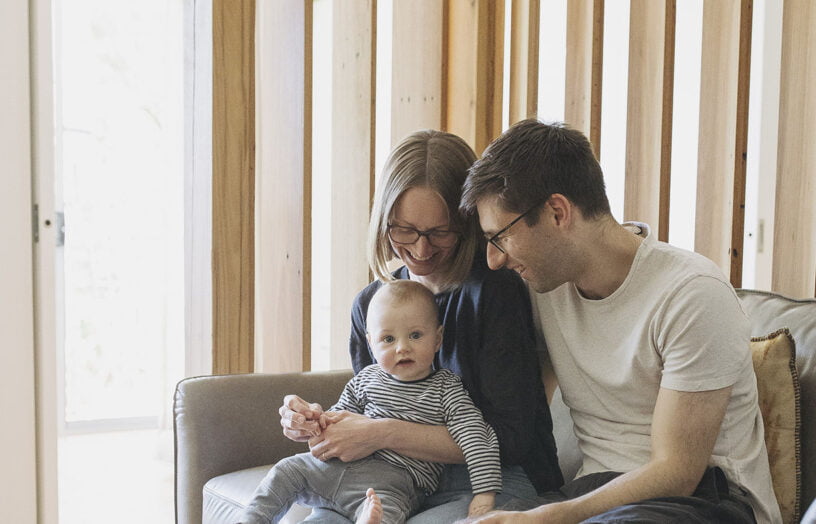 Design workshop
Design workshop
Design workshop revisited: Small space success
With some small but important changes to the internal layout based on our expert’s advice, this expanding young Canberra family is getting more out of their diminutive apartment.
Read more House profiles
House profiles
An alternative vision
This new house in Perth’s inner suburbs puts forward a fresh model of integrated sustainable living for a young family.
Read more


